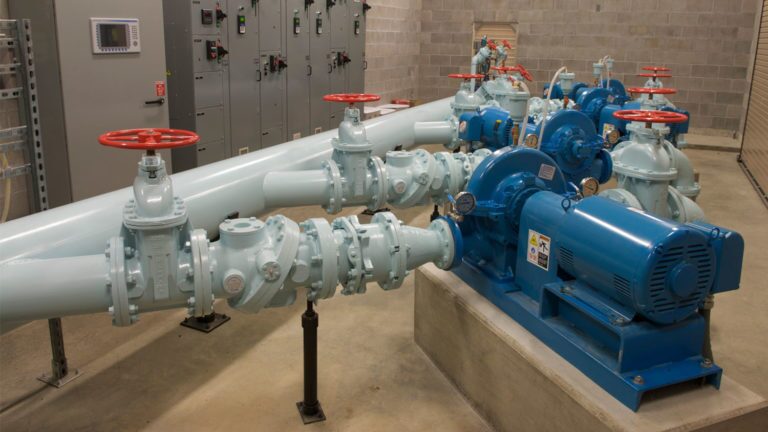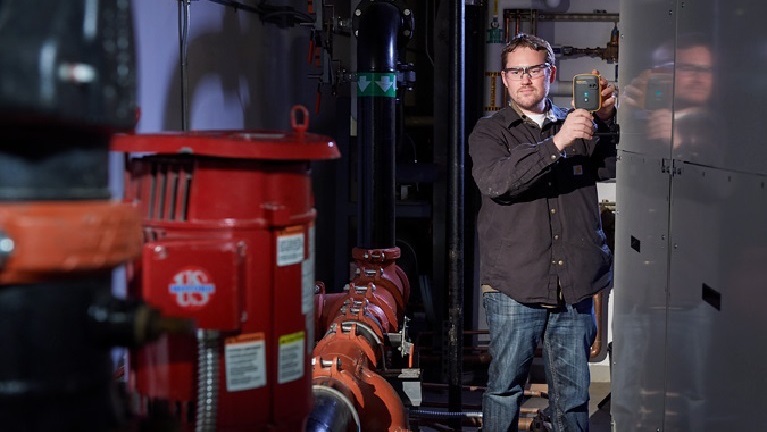Closing the Operations-Maintenance Gap
Over the last 20 years, there have been major advancements in maintenance technology. Evolutions—whether in Computerized Maintenance Management System (CMMS) software or Enterprise Asset Management (EAM) systems, such as Maximo—have focused almost exclusively on streamlining workflows and controlling costs by facilitating preventive maintenance regimens.
The Industrial Internet of Things (IIoT) is distinguished from previous generations of maintenance technology by its focus on assets. Thanks to the increasing use of sensing devices, the IIoT is already generating enormous troves of condition data and providing new insights into asset performance that maintenance and reliability (M&R) professionals can use to optimize strategies.
However, IIoT is about more than simply adding sensors to critical machinery. To deliver maximum business value, IIoT technology needs a ‘smart’ connectivity framework. Connecting data sources to maintenance management systems is the best way to unlock the hidden value in existing programs.
One untapped gold mine of actionable data is a facility’s automation system—or Supervisory Control and Data Acquisition (SCADA) network. A long-standing mainstay of plant operations, SCADA systems generate billions of data points each day. Many of them could provide asset health insights, including:
- Cycle counts
- Runtime hours
- Fuel consumption
- Pressure measurements
- Temperature readings
Largely due to how technology has expanded over the past two decades, operations and maintenance teams use different systems that are separated by a chasm. Data that could be leveraged by one group is not available to the other.
This “Operations-Maintenance Gap” leads to higher-than-necessary operating costs and shortened asset lifecycles. If it could be bridged in a cost-effective way, plant managers would find new opportunities to drive business value back to their companies’ bottom lines.
The Maximo user community needs a solution that enables operations or M&R teams to access the same data.
Current shop floor realities
 SCADA data has typically resided in the domain of operations and reliability engineers and usually ends up in OSIsoft PI, WonderWare, or other databases. Information only makes it’s way to maintenance teams after an extended reliability study, well after the event has passed.
SCADA data has typically resided in the domain of operations and reliability engineers and usually ends up in OSIsoft PI, WonderWare, or other databases. Information only makes it’s way to maintenance teams after an extended reliability study, well after the event has passed.
Failure Mode and Effects Analysis (FMEA) reports are nice, but they are almost always retrospective. After-the-fact reporting misses the opportunity to optimize maintenance strategies and reduce risk simply because this data can’t be shared with Maximo.
The gap between operations and maintenance teams isn’t just inconvenient, it costs organizations money. Typical preventive maintenance (PM) on an industrial pump can cost up to $2,000. Plants can reduce PM demand by as much as 70% simply by scheduling work orders based on actual runtime, a study from IDCON, Inc. states1. If M&R teams are running monthly PMs on a single pump that translates into as much as $16,000 per year. Bridging the Operations-Maintenance Gap will provide smoother operations, faster fault resolution, and less downtime.
The Fluke Connect2TM software platform is one solution that closes the Operations-Maintenance Gap. Connect2 is comprised of two pillars: Connect2AssetsTM (aggregates industrial data) and Connect2MobileTM (sends industrial data to smart devices, such as phones, tablets, and Mac or PC computers).
Unite facilities with Connect2Assets
Connect2Assets consolidates SCADA data from Maximo, providing connectivity and opening up a whole new world of cost savings and extended business value. This advanced connectivity ushers in a step-change, enabling maintenance teams to schedule work based on real-time asset data rather than an arbitrary calendar.
Example: If 100 degrees is considered normal operating temperature for an asset, users may choose to only record the peak value every 24 hours. Once the temperature exceeds 100 degrees, Connect2Assets can record it every 10 minutes. If temperatures stay near 100 degrees for more than 30 minutes software can issue an emergency corrective work order.
Software bridges operations technology with maintenance systems by indexing existing automation repositories against asset hierarchies. During the process, Connect2Assets integrates key data tags with metering points from Maximo’s condition monitoring platform. It works within Maximo, so startup with the solution is rapid and nondisruptive.
Connect2Assets can monitor SCADA data to detect changes in asset values. A rules-based engine enables maintenance teams to trigger work orders or other messages within Maximo when user-defined thresholds are met. Set Connect2Assets to configure variable measuring rates based on changes in key meter readings.
Stay on-the-go with Fluke Mobile
Data stuck on computers in the control room doesn’t provide answers to anyone. Bridging the gaps between systems is just as important as delivering details to the technicians on the shop floor or in remote locations. While Connect2Assets optimizes maintenance and scheduling, Fluke Mobile sends that data to a technician’s smart device.
Maintenance teams need to stay mobile, and Fluke Mobile delivers the data they need to make more informed decisions about asset health. Sending SCADA information to a user’s smart device allows them to access work orders, job plans, and other important information needed to get the job done.
Fluke Mobile can also forward SCADA alarms directly to people based on location, skill, and availability, including all the relevant EAM information. The capability to access alarms, SCADA data, work orders, or plans from a smart device reduces unscheduled downtime by as much as 60%.
Furthermore, Fluke Mobile keeps your information secure. The system automatically inherits security permissions from Maximo, ensuring users only have access to authorized information. The hybrid architecture of the Connect2Assets and Fluke Mobile allows customers to deploy software on their own servers, within existing firewalls, or with third-party hosting providers.
Closing the gap with Fluke
The Connect2 platform goal is to close the Operations-Maintenance Gap. Hitherto isolated assets and systems are incorporated into a Connected Reliability FrameworkTM or an interconnected base of IIoT-enhanced technologies. In this way, Connect2Assets and Fluke Mobile enables three condition-based maintenance capabilities:
- Autonomous Reactive Maintenance: For those in uptime-critical industries, Connect2Assets and Fluke Mobile can notify maintenance within 6 seconds of a fault and automatically dispatch technicians based on SCADA alarms with the appropriate information
- Proactive, Data-driven Maintenance: Connect2Assets and Fluke Mobile enables Maximo to intelligently monitor assets and detect shifts in performance or condition. It can also serve as a data provider for analytics engines, such as IBM
- Connected Workflows: Fluke Mobile enables seamless workflows. Maintenance teams can manage the alarm lifecycle from detection through resolution by creating or linking to work orders in Maximo. Technicians can also access relevant EAM data from the mobile app without returning to the office. With offline support, M&R professionals have the information they need even when there’s no internet
One Maximo Customer’s Experience
A leading medical device, pharmaceutical, and consumer goods company relies on Connect2Assets and Fluke Mobile to enhance its automated systems. With more than 10,000 users across 50+ global locations, bridging the Operations-Maintenance Gap was critical.
The company, one of the world’s largest Maximo customers, deployed Connect2 to empower field technicians wherever the job takes them.
In addition to mobilizing Maximo, a key part of their initiative was to move from calendar-based maintenance to condition-based maintenance for critical assets. Just by scheduling work orders using actual runtime from Connect2Assets and Fluke Mobile, the company was able to:
- Reduce preventive maintenance work orders by 30%
- Decrease Mean Time To Repair (MTTR) by 20%
- Increase asset availability by nearly 50%
Shifting to runtime-based preventive work orders on four critical assets resulted in $5 million of additional production capacity, expanding throughput by 50,000 units without compromising quality.
Conclusion
Technology continues to evolve, enabling IIoT devices to enhance maintenance and reliability programs. By eliminating the data silos between operations and maintenance teams, organizations can harness the power of data they’re already collecting to make a lasting impact on day-to-day processes.
Utilizing and mobilizing SCADA data enables maintenance teams to gain actionable insights into asset health. Cycle counts, runtime hours, pressure measurements, and other industrial information provides maintenance and reliability teams with vital clues into equipment performance.
Advanced connective technologies like Connect2Assets and Fluke Mobile allow organizations to bridge the Operations-Maintenance Gap. For Maximo customers, Connect2Assets and Fluke Mobile are the combined solutions they need to reduce costs, improve asset lifecycle, and drive business value to the bottom line.
If you’d like to learn more about the Fluke Connected Reliability Suite for IBM Maximo, please visit: www.fluke.com/en-us/products/fluke-software/connect2/ibm-maximo
References
IDCON Inc., & Idhammar, C. (n.d.). Optimize your Preventive Maintenance. Retrieved January 30, 2019, from https://www.idcon.com/resource-library/ articles/preventive-maintenance/528-optimize- preventive-maintenance.html







